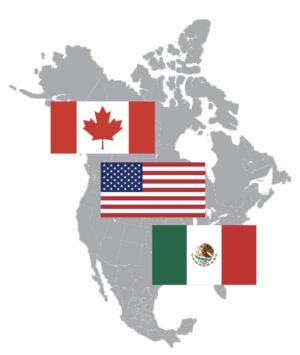 The negotiations that remade the North American Free Trade Agreement were, as one participant put it, a series of “near-death” experiences. …In the years since the U.S.M.C.A was signed, Mexico and Canada have become America’s top trading partners. Millions of jobs depend on this economic alliance, which exceeds $1.8 trillion in trade. …Last week, Trump suggested that he would exit the U.S.M.C.A.: “We’ll either let it expire or, well, maybe work out another deal with Mexico and Canada.” Some observers discount Trump’s bluster as mere gamesmanship. …He returned to the White House on a promise to create jobs and lower prices—to make the country “boom like we’ve never boomed before.” Instead, tariffs are fuelling inflation, and many experts believe that it is only a matter of time before the economy starts hemorrhaging jobs. …As in the previous round of negotiations, time does not appear to be on Trump’s side.
The negotiations that remade the North American Free Trade Agreement were, as one participant put it, a series of “near-death” experiences. …In the years since the U.S.M.C.A was signed, Mexico and Canada have become America’s top trading partners. Millions of jobs depend on this economic alliance, which exceeds $1.8 trillion in trade. …Last week, Trump suggested that he would exit the U.S.M.C.A.: “We’ll either let it expire or, well, maybe work out another deal with Mexico and Canada.” Some observers discount Trump’s bluster as mere gamesmanship. …He returned to the White House on a promise to create jobs and lower prices—to make the country “boom like we’ve never boomed before.” Instead, tariffs are fuelling inflation, and many experts believe that it is only a matter of time before the economy starts hemorrhaging jobs. …As in the previous round of negotiations, time does not appear to be on Trump’s side.
In related coverage:

 As US President Trump sticks with his campaign of tariffs on imports from Canada, some American industries are accusing Canadian competitors of using cheap materials from China in ways that violate free trade rules and undercut U.S. companies. The accusations emerged during recent public hearings in Washington into the future of the Canada-U.S.-Mexico Agreement (CUSMA). …Luke Meisner, counsel for the American Kitchen Cabinet Alliance, told the hearings that Canada and Mexico have become conduits for products from China, circumventing the hefty countervailing duties the US imposed on Chinese-made cabinets and materials in 2020. …Over the past five years, Canada “dramatically increased” its imports of made-in-China cabinets and cabinet materials — such as plywood, medium-density fibreboard (MDF) and moulding — while at the same time boosting exports of finished cabinets to the US, Meisner said. …The Canadian Kitchen Cabinet Association defends its products as Canadian-made.
As US President Trump sticks with his campaign of tariffs on imports from Canada, some American industries are accusing Canadian competitors of using cheap materials from China in ways that violate free trade rules and undercut U.S. companies. The accusations emerged during recent public hearings in Washington into the future of the Canada-U.S.-Mexico Agreement (CUSMA). …Luke Meisner, counsel for the American Kitchen Cabinet Alliance, told the hearings that Canada and Mexico have become conduits for products from China, circumventing the hefty countervailing duties the US imposed on Chinese-made cabinets and materials in 2020. …Over the past five years, Canada “dramatically increased” its imports of made-in-China cabinets and cabinet materials — such as plywood, medium-density fibreboard (MDF) and moulding — while at the same time boosting exports of finished cabinets to the US, Meisner said. …The Canadian Kitchen Cabinet Association defends its products as Canadian-made.






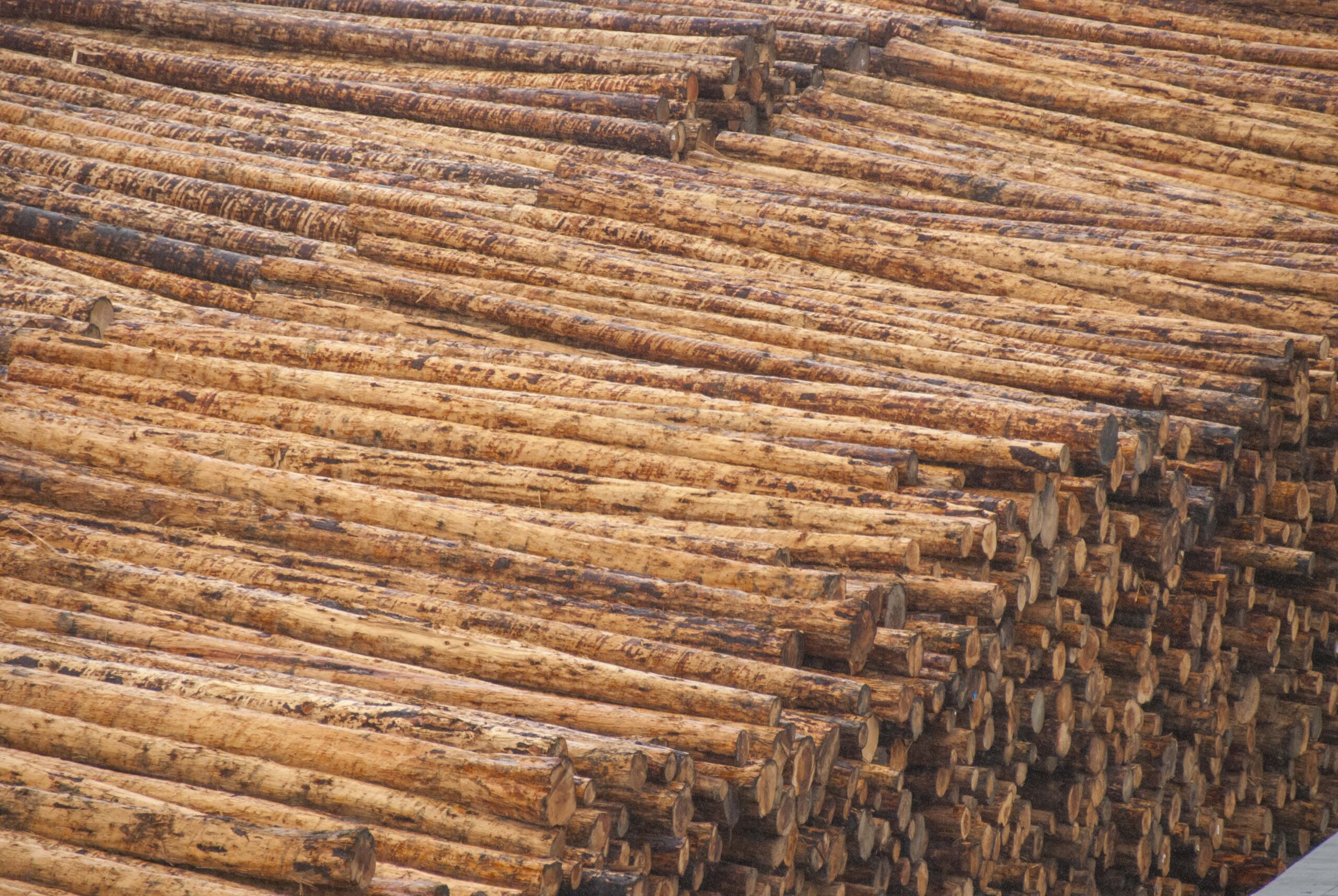 The effect of 10% tariffs on Canadian wood imports was the subject of a public hearing before the state’s Maine-Canadian Legislative Advisory Commission Wednesday. Dana Doran is executive director of the Professional Logging Contractors of the Northeast who says his members are struggling to stay afloat. “If they buy wood from Canada it’s hit by a 10% tariff on those raw logs. If they export any of their finished product they’re subject to any of the export tariffs,” Doran said. “So we’ve seen a chaotic situation that has occurred over the past 8 weeks because of the situation with tariffs.” Doran says if the U.S. had more domestic manufacturing of building and construction products it would have a bigger share of the marketplace, which could blunt tariffs. But Canada, he says, has 60% of that market.
The effect of 10% tariffs on Canadian wood imports was the subject of a public hearing before the state’s Maine-Canadian Legislative Advisory Commission Wednesday. Dana Doran is executive director of the Professional Logging Contractors of the Northeast who says his members are struggling to stay afloat. “If they buy wood from Canada it’s hit by a 10% tariff on those raw logs. If they export any of their finished product they’re subject to any of the export tariffs,” Doran said. “So we’ve seen a chaotic situation that has occurred over the past 8 weeks because of the situation with tariffs.” Doran says if the U.S. had more domestic manufacturing of building and construction products it would have a bigger share of the marketplace, which could blunt tariffs. But Canada, he says, has 60% of that market.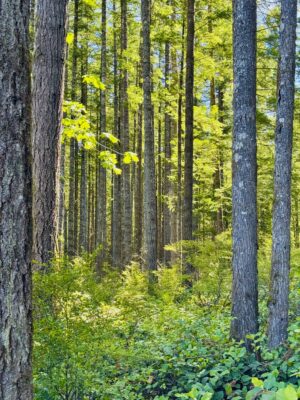 MANCHESTER, Tennessee – Several US sawmills are struggling to stay open after industry leaders said years of trade uncertainty have drained export markets and tightened margins. The Hardwood Federation estimates at least one sawmill is going out of business every week. Additionally, the National Hardwood Lumber Association (NHLA) reported that more than 4% of U.S. sawmills have been lost due to closures and consolidations. The equipment from those sawmills ends up in a growing pile of auction fliers on Johnny Evans’ desk at the Evans Lumber in Manchester, Tennessee. However, Evans is desperate to save his sawmill from being auctioned off due to ongoing trade talks. …Evans said a lot of this goes back to trade tensions that began in 2018, during the first Trump administration. That’s when some countries, like China, stopped buying American hardwood in retaliation to President Donald Trump’s tariff policies.
MANCHESTER, Tennessee – Several US sawmills are struggling to stay open after industry leaders said years of trade uncertainty have drained export markets and tightened margins. The Hardwood Federation estimates at least one sawmill is going out of business every week. Additionally, the National Hardwood Lumber Association (NHLA) reported that more than 4% of U.S. sawmills have been lost due to closures and consolidations. The equipment from those sawmills ends up in a growing pile of auction fliers on Johnny Evans’ desk at the Evans Lumber in Manchester, Tennessee. However, Evans is desperate to save his sawmill from being auctioned off due to ongoing trade talks. …Evans said a lot of this goes back to trade tensions that began in 2018, during the first Trump administration. That’s when some countries, like China, stopped buying American hardwood in retaliation to President Donald Trump’s tariff policies.
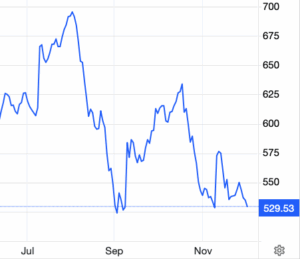 Lumber futures fell toward $530 per thousand board feet, down nearly 10% from November’s peak, as the market contends with pronounced oversupply and lingering weak demand. Mills and distributors continue to carry elevated inventories, a hangover from early 2025 when buyers front-loaded purchases in anticipation of tariffs, leaving the market with a persistent supply overhang. At the same time, US housing starts and building permits remain below last year’s levels, reflecting a prolonged construction slowdown as easing borrowing costs have yet to materialize in higher new building activity and limit near-term consumption of framing lumber. Demand from renovation and new homebuilding also remains subdued, with housing-related wood products consumption estimated to have declined in 2024 and only a modest recovery expected in 2025.
Lumber futures fell toward $530 per thousand board feet, down nearly 10% from November’s peak, as the market contends with pronounced oversupply and lingering weak demand. Mills and distributors continue to carry elevated inventories, a hangover from early 2025 when buyers front-loaded purchases in anticipation of tariffs, leaving the market with a persistent supply overhang. At the same time, US housing starts and building permits remain below last year’s levels, reflecting a prolonged construction slowdown as easing borrowing costs have yet to materialize in higher new building activity and limit near-term consumption of framing lumber. Demand from renovation and new homebuilding also remains subdued, with housing-related wood products consumption estimated to have declined in 2024 and only a modest recovery expected in 2025. 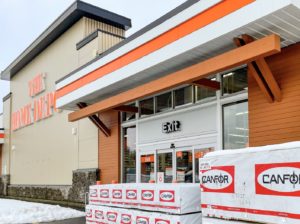 ATLANTA — Home Depot gave a cautious outlook for fiscal 2026 as the housing market continues to lag. Shares of the home-improvement retailer fell 2.4% to $341.62 in premarket trading on Tuesday. The company expects sales to rise between 2.5% to 4.5% in fiscal 2026, the midpoint of which is up from its guidance for 3% growth this fiscal year. Analysts polled by FactSet were looking for growth of 4.5%. …Home Depot said it expects those metrics to rise at a faster clip if the housing market gains momentum and there is increased spend on larger projects, driven by pent-up demand. The Atlanta company’s market-recovery case forecasts sales will grow about 5% to 6%, earnings per share will increase about mid- to high-single digits and comparable sales will be up 4% to 5%. “We believe that the pressures in housing will correct and provide the home improvement market with support for growth faster than the general economy”.
ATLANTA — Home Depot gave a cautious outlook for fiscal 2026 as the housing market continues to lag. Shares of the home-improvement retailer fell 2.4% to $341.62 in premarket trading on Tuesday. The company expects sales to rise between 2.5% to 4.5% in fiscal 2026, the midpoint of which is up from its guidance for 3% growth this fiscal year. Analysts polled by FactSet were looking for growth of 4.5%. …Home Depot said it expects those metrics to rise at a faster clip if the housing market gains momentum and there is increased spend on larger projects, driven by pent-up demand. The Atlanta company’s market-recovery case forecasts sales will grow about 5% to 6%, earnings per share will increase about mid- to high-single digits and comparable sales will be up 4% to 5%. “We believe that the pressures in housing will correct and provide the home improvement market with support for growth faster than the general economy”. The US Federal Reserve is poised to deliver its third straight interest rate cut Wednesday, while simultaneously firing a warning shot about what’s ahead. Following a period of remarkable indecision about which way central bank policymakers would lean, markets have settled on a quarter-percentage point reduction. If that’s the case, it will take the Fed’s key interest rate down to a range of 3.5% to 3.75%. However, there are complications. The rate-setting Federal Open Market Committee is split between members who favor cuts as a way to head off further weakness in the labor market and those who think easing has gone far enough and threatens to aggravate inflation. That’s why the term “hawkish cut” has become the buzzy term for this meeting. In market parlance, it refers to a Fed that will reduce, but deliver a message that no one should be holding their breath for the next one.
The US Federal Reserve is poised to deliver its third straight interest rate cut Wednesday, while simultaneously firing a warning shot about what’s ahead. Following a period of remarkable indecision about which way central bank policymakers would lean, markets have settled on a quarter-percentage point reduction. If that’s the case, it will take the Fed’s key interest rate down to a range of 3.5% to 3.75%. However, there are complications. The rate-setting Federal Open Market Committee is split between members who favor cuts as a way to head off further weakness in the labor market and those who think easing has gone far enough and threatens to aggravate inflation. That’s why the term “hawkish cut” has become the buzzy term for this meeting. In market parlance, it refers to a Fed that will reduce, but deliver a message that no one should be holding their breath for the next one. The average mortgage rate in November continued to trend lower to its lowest level in over a year. According to Freddie Mac, the 30-year fixed-rate mortgage averaged 6.24% in November, 2 basis points (bps) lower than in October. Meanwhile, the 15-year rate increased 3 bps to 5.51%. Both the 30-year and 15-year rates remain lower than a year ago, dropping by 57 bps and 52 bps year-over-year, respectively. …Falling mortgage rates have shown some impact on housing activity. Mortgage application activity continues to strengthen, led by increases in adjustable-rate mortgages and refinancing applications. Additionally, existing home sales rose to an eight-month high in October. There is no data available for new home sales in October due to the government shutdown.
The average mortgage rate in November continued to trend lower to its lowest level in over a year. According to Freddie Mac, the 30-year fixed-rate mortgage averaged 6.24% in November, 2 basis points (bps) lower than in October. Meanwhile, the 15-year rate increased 3 bps to 5.51%. Both the 30-year and 15-year rates remain lower than a year ago, dropping by 57 bps and 52 bps year-over-year, respectively. …Falling mortgage rates have shown some impact on housing activity. Mortgage application activity continues to strengthen, led by increases in adjustable-rate mortgages and refinancing applications. Additionally, existing home sales rose to an eight-month high in October. There is no data available for new home sales in October due to the government shutdown.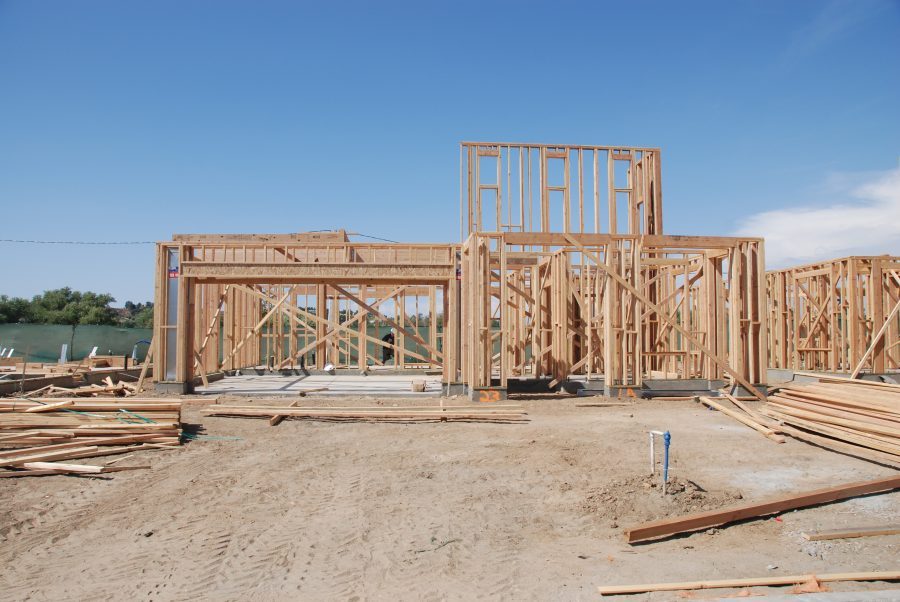 “President Donald Trump’s tariffs could increase builder costs anywhere from $7,500 to $10,000 per home,” said Rob Dietz, chief economist at the National Association of Home Builders… Last year, the NAHB estimated that every $1,000 increase in the median price of a new home prices out roughly 106,000 potential buyers. The biggest impact has been felt in lumber prices, which are expected to total about $4,900 per home on average. …about a third of the wood purchased for homebuilding comes from Canada. Domestic lumber producers generally raise their prices to match import prices. …major players like Home Depot are better able to mitigate and predict rising and volatile prices than smaller retailers. North American Builder’s Supply, based in Illinois, has filed for Chapter 11 bankruptcy protection. …“Over 50% of our inventory is not part of tariffs and is obviously sourced domestically,” Home Depot Executive Vice President William Bastek shared.
“President Donald Trump’s tariffs could increase builder costs anywhere from $7,500 to $10,000 per home,” said Rob Dietz, chief economist at the National Association of Home Builders… Last year, the NAHB estimated that every $1,000 increase in the median price of a new home prices out roughly 106,000 potential buyers. The biggest impact has been felt in lumber prices, which are expected to total about $4,900 per home on average. …about a third of the wood purchased for homebuilding comes from Canada. Domestic lumber producers generally raise their prices to match import prices. …major players like Home Depot are better able to mitigate and predict rising and volatile prices than smaller retailers. North American Builder’s Supply, based in Illinois, has filed for Chapter 11 bankruptcy protection. …“Over 50% of our inventory is not part of tariffs and is obviously sourced domestically,” Home Depot Executive Vice President William Bastek shared. Payson sits in one of the most fire-prone regions in the country, yet the town council has repeatedly declined to adopt fire-hardening requirements for new homes. The town several years ago approved a Firewise landscaping code aimed at thinning overgrown properties and removing vegetation touching buildings. However, the council has twice rejected a Wildland-Urban Interface (WUI) building code, most recently after firefighters urged the council to adopt standards for new construction. Builders raised concerns about cost, and the council again declined to move forward. A collection of studies suggests those concerns may not align with the data. Research from federal agencies, economists and wildfire specialists shows WUI codes add little to the cost of new construction, save money over time and significantly reduce the likelihood of homes burning in a wildfire. The research also points to major long-term savings for taxpayers, who shoulder growing federal firefighting costs in high-risk areas.
Payson sits in one of the most fire-prone regions in the country, yet the town council has repeatedly declined to adopt fire-hardening requirements for new homes. The town several years ago approved a Firewise landscaping code aimed at thinning overgrown properties and removing vegetation touching buildings. However, the council has twice rejected a Wildland-Urban Interface (WUI) building code, most recently after firefighters urged the council to adopt standards for new construction. Builders raised concerns about cost, and the council again declined to move forward. A collection of studies suggests those concerns may not align with the data. Research from federal agencies, economists and wildfire specialists shows WUI codes add little to the cost of new construction, save money over time and significantly reduce the likelihood of homes burning in a wildfire. The research also points to major long-term savings for taxpayers, who shoulder growing federal firefighting costs in high-risk areas.

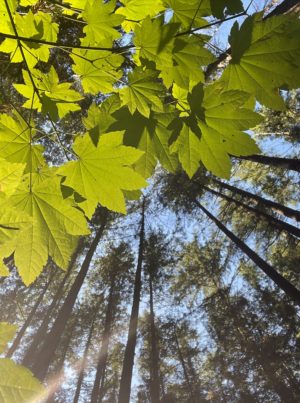 Dr. Richard Karban, a trained ecologist and member of the UC Davis Entomology Department… who covers an array of intriguing topics, from “eavesdropping” plants to distinct plant “personalities”, is fully aware of the controversy surrounding his field. But he emphasizes that plant communication isn’t a fantasy; it is a biological response to specific cues. …Decades ago, little was known about it. Today, many researchers, such as Dr. Karban, argue that forests are highly communicative biological networks. These are sophisticated behaviors, but Karban attributes them to evolution and natural selection, not hidden sentience. He cautions against projecting human emotions onto biology, but suggests that to understand plants, we must understand their version of a “Hierarchy of Needs.” …Dr Kathryn Flinn, an ecologist at Baldwin Wallace University, believes that while mycorrhizal networks move resources, this does not mean the tree sending those resources is making a strategic or selfless decision. …Another notion gaining attention is that of a ‘Mother Tree’ recognising family members.
Dr. Richard Karban, a trained ecologist and member of the UC Davis Entomology Department… who covers an array of intriguing topics, from “eavesdropping” plants to distinct plant “personalities”, is fully aware of the controversy surrounding his field. But he emphasizes that plant communication isn’t a fantasy; it is a biological response to specific cues. …Decades ago, little was known about it. Today, many researchers, such as Dr. Karban, argue that forests are highly communicative biological networks. These are sophisticated behaviors, but Karban attributes them to evolution and natural selection, not hidden sentience. He cautions against projecting human emotions onto biology, but suggests that to understand plants, we must understand their version of a “Hierarchy of Needs.” …Dr Kathryn Flinn, an ecologist at Baldwin Wallace University, believes that while mycorrhizal networks move resources, this does not mean the tree sending those resources is making a strategic or selfless decision. …Another notion gaining attention is that of a ‘Mother Tree’ recognising family members.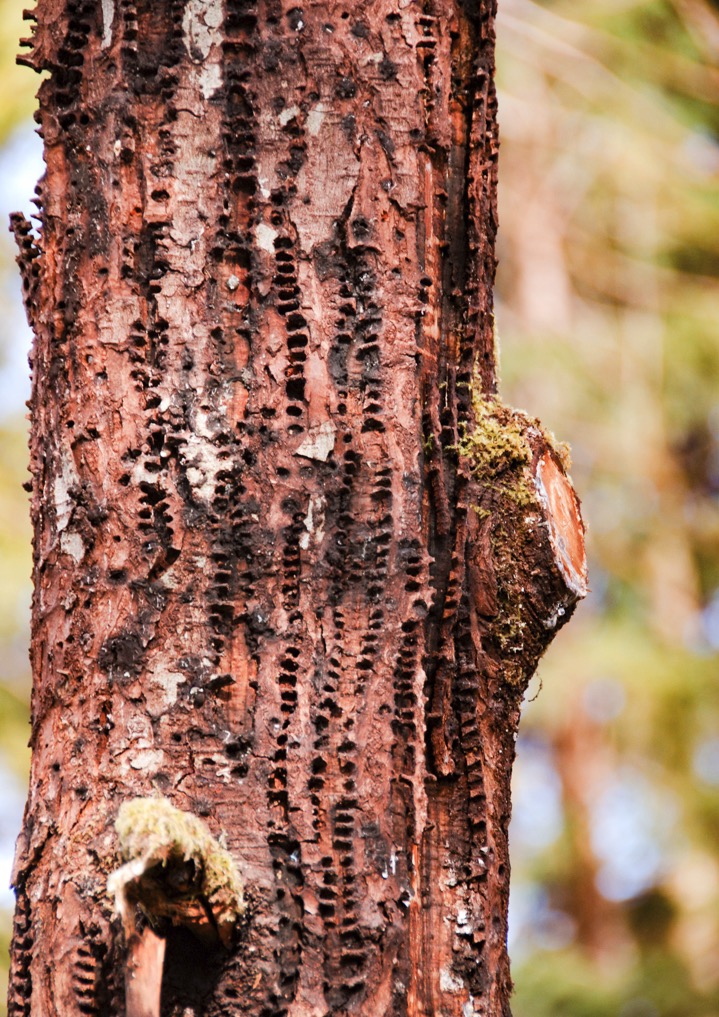 The Trump administration’s pending deletion of the Endangered Species Act’s definition of “harm” will have an outsize impact on imperiled species in Northwest forests targeted for logging, especially the northern spotted owl, environmental attorneys say. Habitat for several species, including the threatened owl and the endangered marbled murrelet seabird, overlap with federally-managed forests in Oregon, Washington, and California, where logging is expected to increase under White House emergency orders and a new law that requires a roughly 75% increase in timber harvesting in national forests by 2034. “Without adequate, suitable places to live and reproduce, species go extinct,” said Melinda Taylor, senior lecturer at the University of Texas at Austin School of Law. “Repealing the definition of harm would undermine almost all of the regulatory framework in place to protect endangered species.”
The Trump administration’s pending deletion of the Endangered Species Act’s definition of “harm” will have an outsize impact on imperiled species in Northwest forests targeted for logging, especially the northern spotted owl, environmental attorneys say. Habitat for several species, including the threatened owl and the endangered marbled murrelet seabird, overlap with federally-managed forests in Oregon, Washington, and California, where logging is expected to increase under White House emergency orders and a new law that requires a roughly 75% increase in timber harvesting in national forests by 2034. “Without adequate, suitable places to live and reproduce, species go extinct,” said Melinda Taylor, senior lecturer at the University of Texas at Austin School of Law. “Repealing the definition of harm would undermine almost all of the regulatory framework in place to protect endangered species.” 
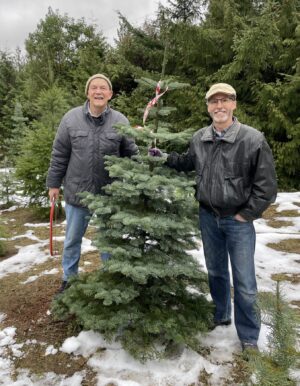 TEXAS — At Santa’s Christmas Trees in Grapevine, owner Kevin Keck has a simple motto: “Every tree deserves a home, and every home deserves a tree.” To keep people happy in a challenging economy, he has not raised his prices. …Part of why he’s able to keep his prices down is that his trees aren’t impacted by tariffs. “No, our trees come from Oregon, so they’re all United States-grown and shipped,” Keck said. “So, the tariffs won’t affect us any.”…But artificial trees are impacted. According to the National Christmas Tree Association, about 80% of fake trees in the US are manufactured in China. Some U.S. importers say those tariffs could raise the prices on trees by 10-20%. Keck thinks that the increase will make more people consider live trees.
TEXAS — At Santa’s Christmas Trees in Grapevine, owner Kevin Keck has a simple motto: “Every tree deserves a home, and every home deserves a tree.” To keep people happy in a challenging economy, he has not raised his prices. …Part of why he’s able to keep his prices down is that his trees aren’t impacted by tariffs. “No, our trees come from Oregon, so they’re all United States-grown and shipped,” Keck said. “So, the tariffs won’t affect us any.”…But artificial trees are impacted. According to the National Christmas Tree Association, about 80% of fake trees in the US are manufactured in China. Some U.S. importers say those tariffs could raise the prices on trees by 10-20%. Keck thinks that the increase will make more people consider live trees.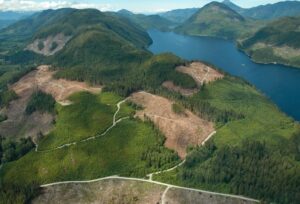 Retired federal wildlife surveyor Erich Reeder… has seen centuries-old forests targeted for destruction as President Donald Trump’s administration accelerates logging on federal lands nationwide. Earlier this year, loggers cleared out most of the forest in Galagher Canyon, part of a federal timber sale an hour south of Eugene, Oregon. …“The Trump administration is ordering the last of our publicly-owned mature and old-growth forests to be cut off and sold,” Reeder, 59, said. …Legal and political battles are heating up between Trump, who is eager to bolster the timber industry as part of his effort to create thousands of jobs and reduce the risk of wildfire, and environmentalists who are keen to protect ancient forests and the endangered wildlife that depend on them. …At least 27 court battles over federal logging and endangered species are unfolding from California to Washington, DC. Seven cases are challenging logging in eastern states.
Retired federal wildlife surveyor Erich Reeder… has seen centuries-old forests targeted for destruction as President Donald Trump’s administration accelerates logging on federal lands nationwide. Earlier this year, loggers cleared out most of the forest in Galagher Canyon, part of a federal timber sale an hour south of Eugene, Oregon. …“The Trump administration is ordering the last of our publicly-owned mature and old-growth forests to be cut off and sold,” Reeder, 59, said. …Legal and political battles are heating up between Trump, who is eager to bolster the timber industry as part of his effort to create thousands of jobs and reduce the risk of wildfire, and environmentalists who are keen to protect ancient forests and the endangered wildlife that depend on them. …At least 27 court battles over federal logging and endangered species are unfolding from California to Washington, DC. Seven cases are challenging logging in eastern states.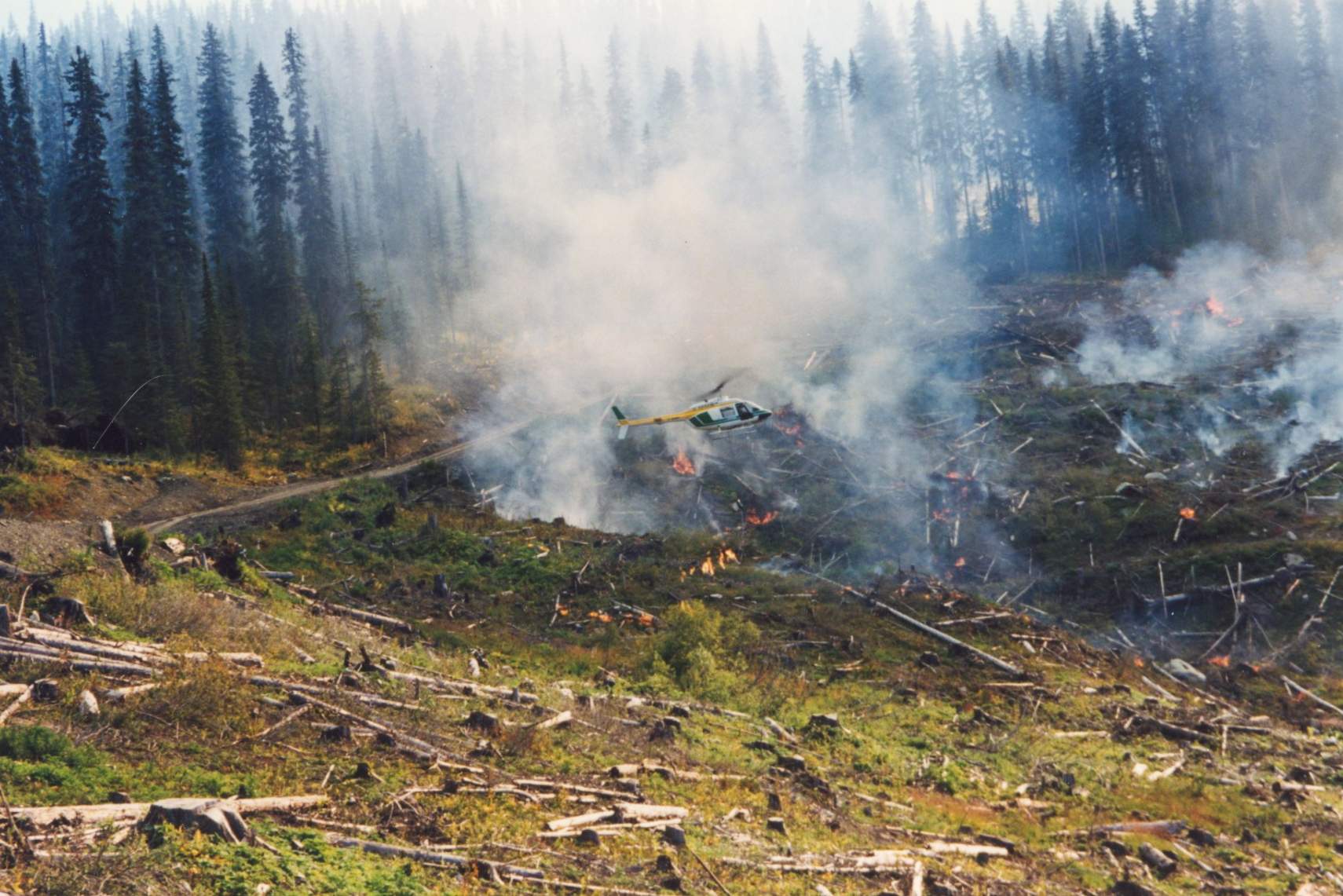 A new analysis making the rounds on Capitol Hill says the U.S. Forest Service sharply scaled back prescribed burns, thinning and other fuel-reduction work this year, leaving far fewer acres treated than in recent years. Through the first nine months of 2025, the agency logged under 1.7 million acres of treatments, well below the roughly four-year average that wildfire experts say is needed to protect communities and watersheds. The drop-off has Democratic senators and veteran firefighters pressing the agency for staffing numbers and a concrete plan to catch up before next fire season. As reported by Times of San Diego, the data cited by lawmakers comes from an analysis compiled by Grassroots Wildland Firefighters that compares the January-September 2025 total to a roughly 3.6 million-acre annual average from 2021-2024. Senators circulated that tally in a letter demanding detailed staffing and mitigation plans from the Forest Service.
A new analysis making the rounds on Capitol Hill says the U.S. Forest Service sharply scaled back prescribed burns, thinning and other fuel-reduction work this year, leaving far fewer acres treated than in recent years. Through the first nine months of 2025, the agency logged under 1.7 million acres of treatments, well below the roughly four-year average that wildfire experts say is needed to protect communities and watersheds. The drop-off has Democratic senators and veteran firefighters pressing the agency for staffing numbers and a concrete plan to catch up before next fire season. As reported by Times of San Diego, the data cited by lawmakers comes from an analysis compiled by Grassroots Wildland Firefighters that compares the January-September 2025 total to a roughly 3.6 million-acre annual average from 2021-2024. Senators circulated that tally in a letter demanding detailed staffing and mitigation plans from the Forest Service.
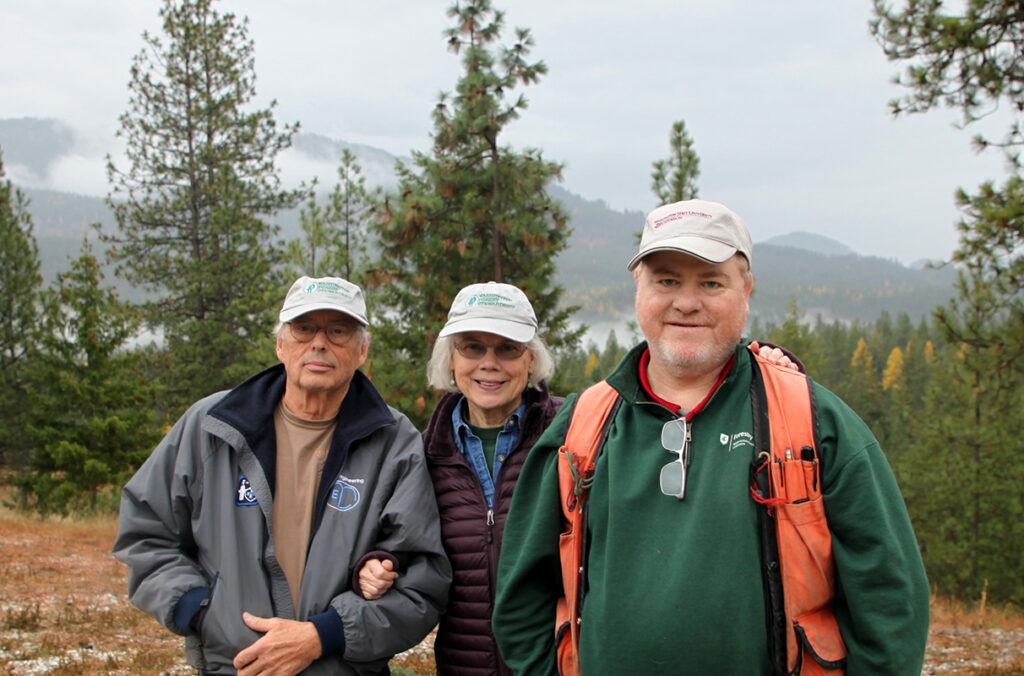
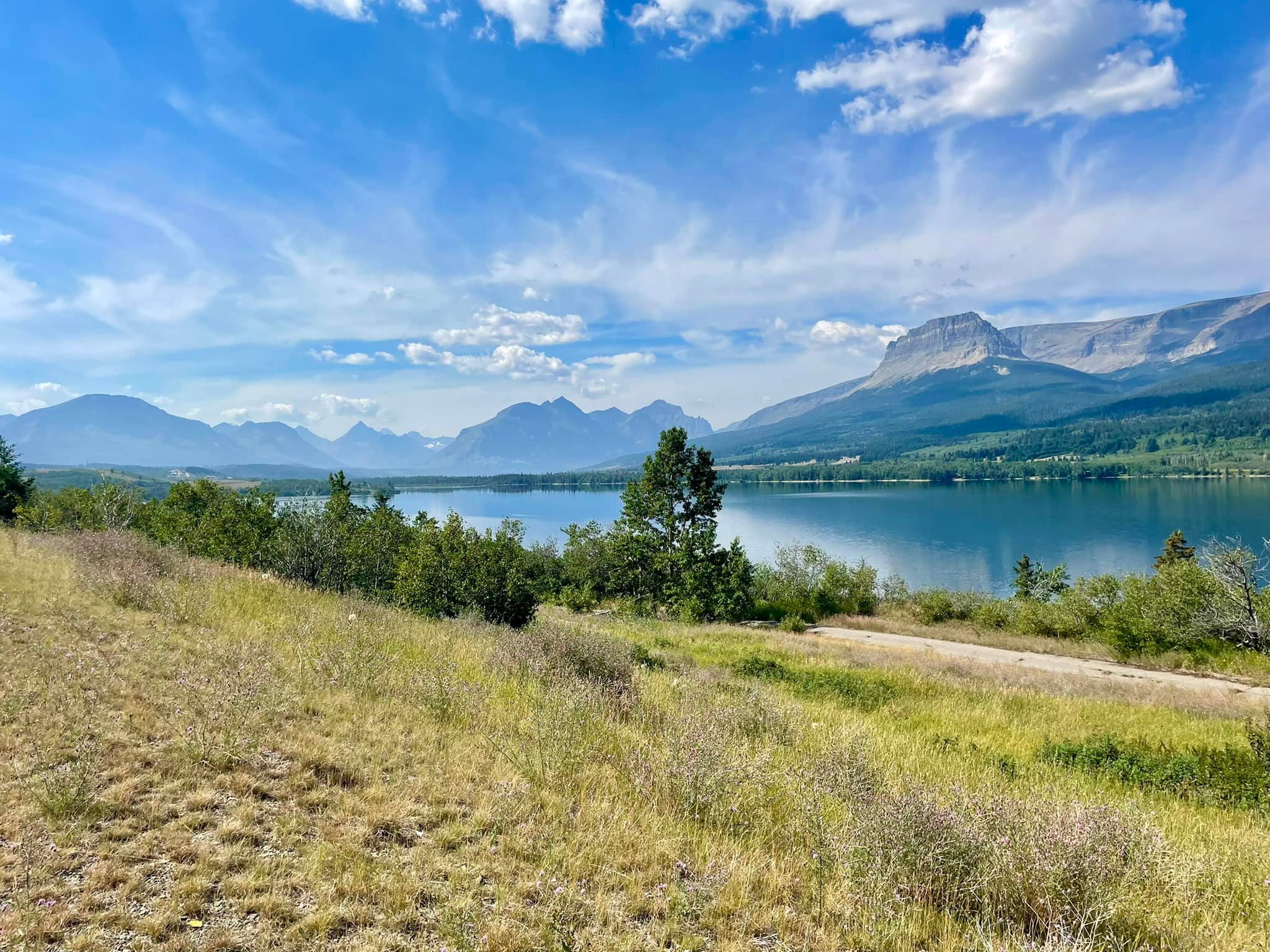 Despite a growing chorus of conservation advocates calling on Montana’s congressional delegates to defend roadless wildlands through permanent protections, a bill to do so seems unlikely to advance without Republican support, including that of U.S. Sen. Steve Daines. A Senate Energy and Natural Resources subcommittee on which Daines serves held a hearing Dec. 2 to consider a slate of 26 public lands and wildfire bills, among them a measure to enshrine the decades-old Roadless Rule into law. Re-introduced in June … the Roadless Area Conservation Act would protect nearly 60 million acres of national forestland. Although it has failed before, its supporters say this version comes at a pivotal moment as the Trump administration moves to roll back safeguards introduced in 2001. Hoping to capitalize on the bipartisan support that helped cleave a public land sale provision out of [the] One Big Beautiful Bill Act … conservation groups this week mounted a similar pressure campaign on Daines.
Despite a growing chorus of conservation advocates calling on Montana’s congressional delegates to defend roadless wildlands through permanent protections, a bill to do so seems unlikely to advance without Republican support, including that of U.S. Sen. Steve Daines. A Senate Energy and Natural Resources subcommittee on which Daines serves held a hearing Dec. 2 to consider a slate of 26 public lands and wildfire bills, among them a measure to enshrine the decades-old Roadless Rule into law. Re-introduced in June … the Roadless Area Conservation Act would protect nearly 60 million acres of national forestland. Although it has failed before, its supporters say this version comes at a pivotal moment as the Trump administration moves to roll back safeguards introduced in 2001. Hoping to capitalize on the bipartisan support that helped cleave a public land sale provision out of [the] One Big Beautiful Bill Act … conservation groups this week mounted a similar pressure campaign on Daines.
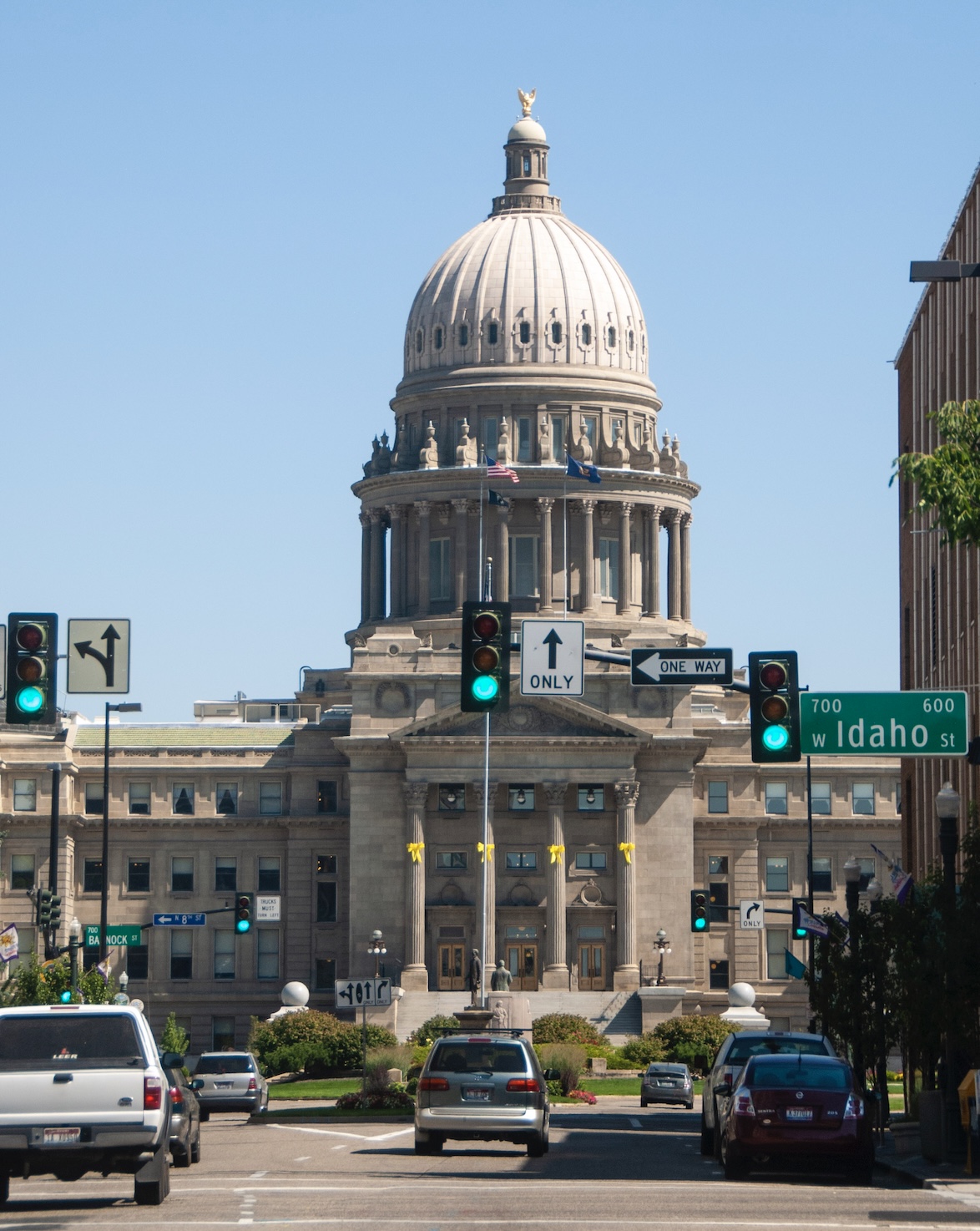 BOISE, Idaho — Governor Brad Little joined U.S. Forest Service Chief Tom Schultz and Idaho Department of Lands Director Dustin Miller on Friday to renew and expand Idaho’s Shared Stewardship agreement with the federal government — a move aimed at increasing the pace and scale of forest management across the state. The updated agreement establishes a collaborative framework between the U.S. Forest Service and the State of Idaho to strengthen policies related to forest restoration, land management, and wildfire mitigation “across Idaho’s forests and nearby communities.” Building on the landmark 2018 Shared Stewardship agreement, the new plan deepens joint efforts to boost timber production, accelerate wildland restoration, and expand forest health projects on national forests and adjacent state and private lands. The partnership reaffirms each side’s commitment to proactive landscape management as fire seasons grow increasingly longer and more intense.
BOISE, Idaho — Governor Brad Little joined U.S. Forest Service Chief Tom Schultz and Idaho Department of Lands Director Dustin Miller on Friday to renew and expand Idaho’s Shared Stewardship agreement with the federal government — a move aimed at increasing the pace and scale of forest management across the state. The updated agreement establishes a collaborative framework between the U.S. Forest Service and the State of Idaho to strengthen policies related to forest restoration, land management, and wildfire mitigation “across Idaho’s forests and nearby communities.” Building on the landmark 2018 Shared Stewardship agreement, the new plan deepens joint efforts to boost timber production, accelerate wildland restoration, and expand forest health projects on national forests and adjacent state and private lands. The partnership reaffirms each side’s commitment to proactive landscape management as fire seasons grow increasingly longer and more intense.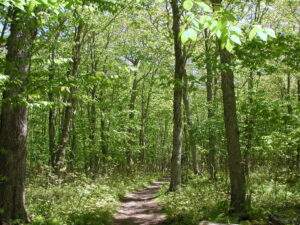 WARREN COUNTY, Pittsburgh — Local leaders and timber industry professionals are hoping for an economic boost as logging increases in the Allegheny National Forest. The timber industry has strong roots in the four counties that contain the Allegheny National Forest: Elk, Forest, McKean, and Warren. With fewer than 150,000 residents, it’s a small enough region where almost everyone knows everyone else in the business. …“If you’re somebody who lives here, almost everybody is touched in some way by the timber industry,” said Julia McCray, at the Allegheny Forest Alliance, a coalition dedicated to the national forest’s health that includes local officials and people from the timber industry. As logging expands on federal lands amid a Trump administration push for more timber, the effects could be felt for years to come — in the forest and beyond. A single logging operation relies on a multi-step chain of work that employs many.
WARREN COUNTY, Pittsburgh — Local leaders and timber industry professionals are hoping for an economic boost as logging increases in the Allegheny National Forest. The timber industry has strong roots in the four counties that contain the Allegheny National Forest: Elk, Forest, McKean, and Warren. With fewer than 150,000 residents, it’s a small enough region where almost everyone knows everyone else in the business. …“If you’re somebody who lives here, almost everybody is touched in some way by the timber industry,” said Julia McCray, at the Allegheny Forest Alliance, a coalition dedicated to the national forest’s health that includes local officials and people from the timber industry. As logging expands on federal lands amid a Trump administration push for more timber, the effects could be felt for years to come — in the forest and beyond. A single logging operation relies on a multi-step chain of work that employs many.


 The Family Forest Carbon Program pays landowners not to timber their trees, then sells the additional growth as carbon credits. But critics question whether it leads to overall emissions reductions. David Funk has spent decades working to restore the native forest ecosystems of southeast Ohio. Now, he’s finally getting paid for it—through a carbon credit program. “The Nature Conservancy reached out and knew that I was very active in the preservation of woodlands in southeastern Ohio,” Funk said. “It was just a perfect fit for what we do.” That’s why Funk was eager to become the first Ohio member of the Family Forest Carbon Program. An initiative of the American Forest Foundation and the Nature Conservancy, the FFCP pays private landowners not to timber the forests on their properties for 20 years. It also provides free consultations with forest managers to facilitate whatever goals landowners may have for their woods—hunting, hiking, even sustainable harvesting.
The Family Forest Carbon Program pays landowners not to timber their trees, then sells the additional growth as carbon credits. But critics question whether it leads to overall emissions reductions. David Funk has spent decades working to restore the native forest ecosystems of southeast Ohio. Now, he’s finally getting paid for it—through a carbon credit program. “The Nature Conservancy reached out and knew that I was very active in the preservation of woodlands in southeastern Ohio,” Funk said. “It was just a perfect fit for what we do.” That’s why Funk was eager to become the first Ohio member of the Family Forest Carbon Program. An initiative of the American Forest Foundation and the Nature Conservancy, the FFCP pays private landowners not to timber the forests on their properties for 20 years. It also provides free consultations with forest managers to facilitate whatever goals landowners may have for their woods—hunting, hiking, even sustainable harvesting.